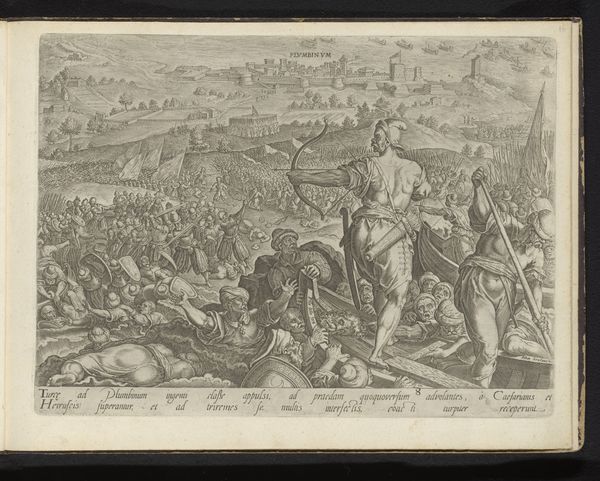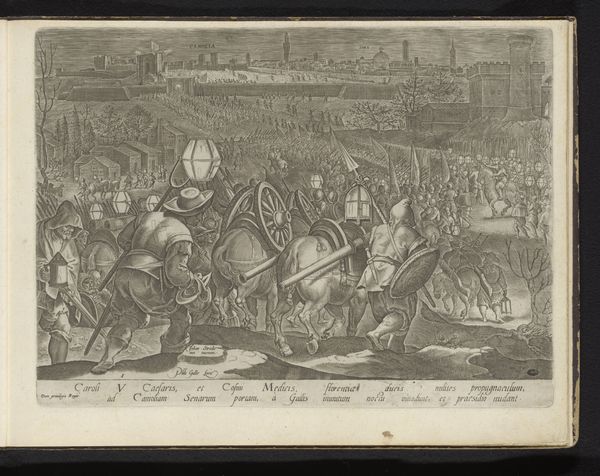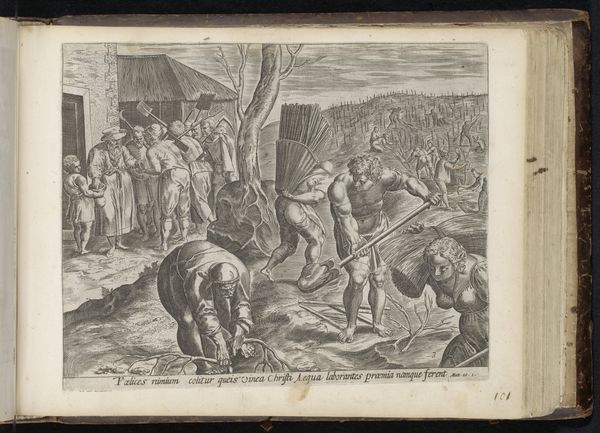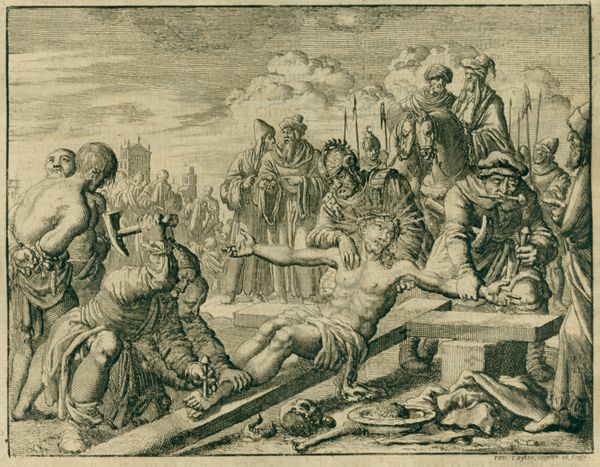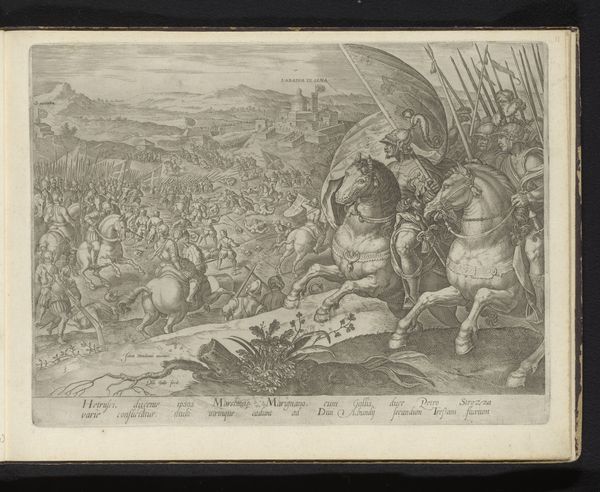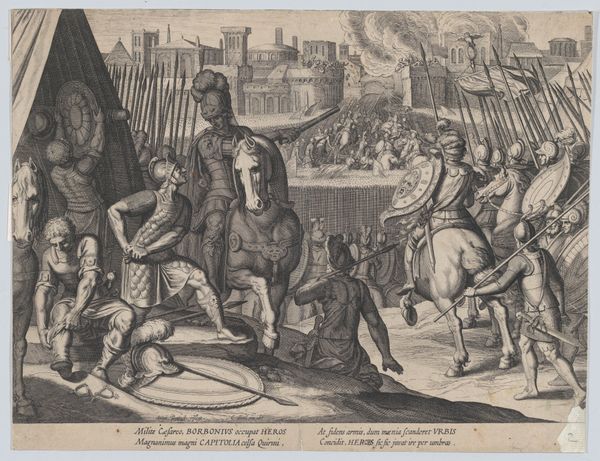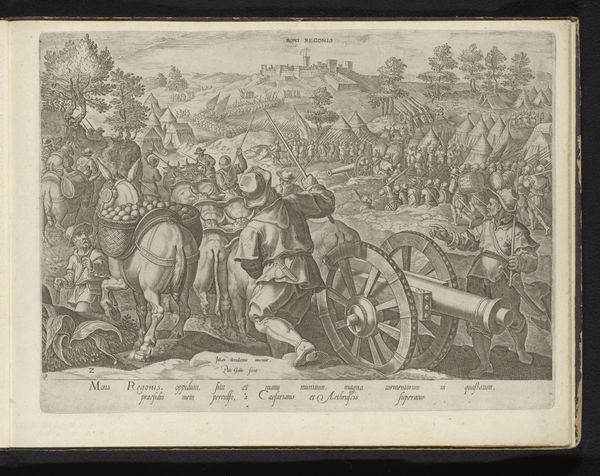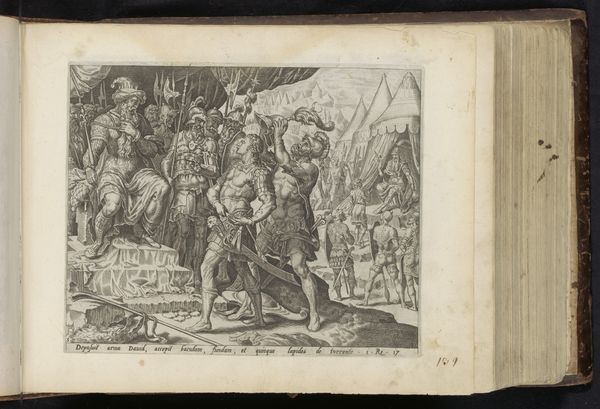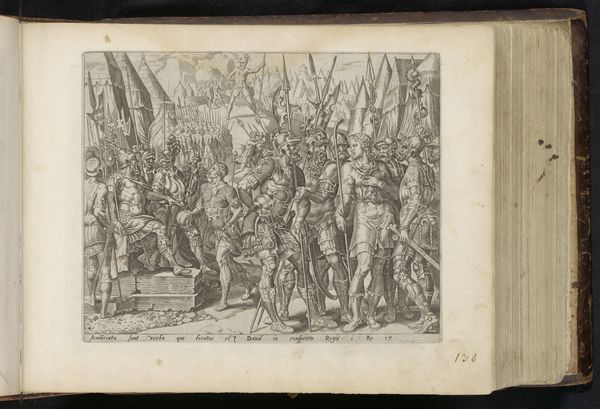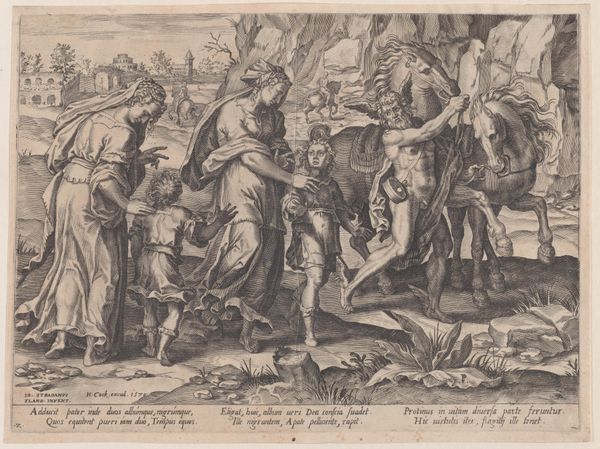
print, engraving
#
narrative-art
#
pen drawing
# print
#
landscape
#
mannerism
#
figuration
#
11_renaissance
#
history-painting
#
engraving
Dimensions: height 220 mm, width 295 mm
Copyright: Rijks Museum: Open Domain
Curator: Here we have Philips Galle's "Inname van Casole d'Elsa," an engraving from 1583, currently held in the Rijksmuseum collection. It depicts…well, a bit of a dramatic scene, isn't it? Editor: It’s certainly lively. Chaos, even. At first glance, it's a swirling mass of bodies and steel. There’s a real sense of…disquiet. Curator: Precisely. Galle, a master of Mannerism, captures not just the siege but the *atmosphere* of conflict. This work reflects the tumultuous period of religious wars in Europe. Galle was a printer and designer and was particularly active in Antwerp in spreading prints that detailed European history in this era. Editor: It feels theatrical, almost stage-managed. The foreground figures, especially the soldiers looming so large, give it this intense sense of…propaganda. It’s clearly trying to portray something grand. I mean the whole print is covered in sharp objects: pointy helmets, pointy lances, even pointy elbows. Curator: The use of the landscape adds another layer, too. The distant city, tiny under siege, underscores the scale of the invasion, as this seemingly endless array of fighters pushes into its gates. You see the ways he makes it so we understand that civilization and wilderness, in a sense, collide in conflict? Editor: Absolutely, and I also note the symbolism; The pile of discarded weaponry is a nice symbolic representation of surrender and defeat, or even conquest, really setting the stage. Curator: Indeed. Prints such as these helped to shape public perception of military and political events. Consider it early "photojournalism," but with a clear agenda. Galle clearly chose to frame it as heroic or justified—prints such as this would not have appeared had he portrayed any anti-war message. Editor: That makes the "chaos" almost performative. Like, look at all the activity! And it certainly creates some intriguing political interpretations around authority. Curator: I’ll agree! What I appreciate most about "Inname van Casole d'Elsa," it is that we can view a frozen point in a specific and a broad-scale conflict. The individual act as well as the political power struggle all come into full and clear view in a rather small space. Editor: A good reminder that art often serves purposes beyond just being aesthetically pleasing! The narrative packed into those tiny engraved lines speaks volumes.
Comments
No comments
Be the first to comment and join the conversation on the ultimate creative platform.
